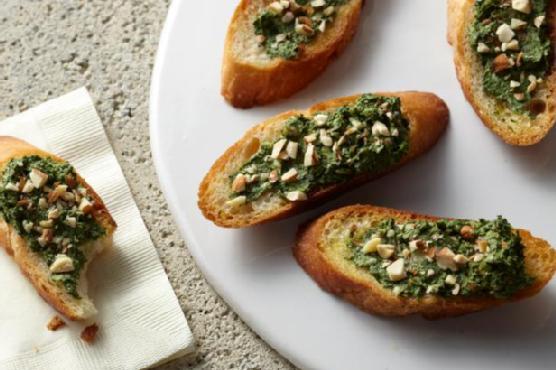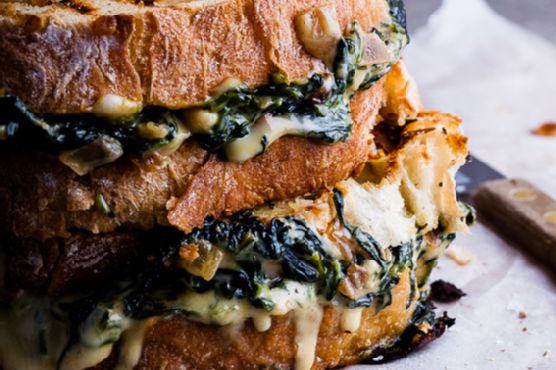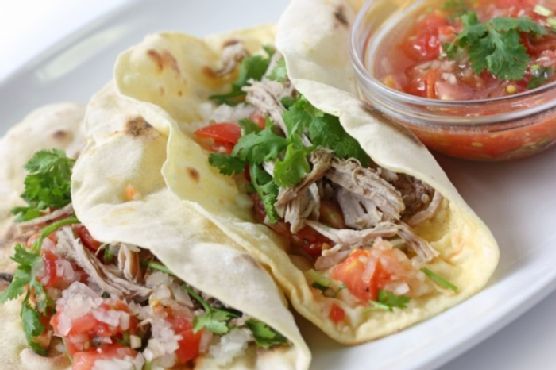Steamer Clam Chowder
Steamer Clam Chowder is an American recipe that serves 10. One serving contains 311 calories, 9g of protein, and 25g of fat. For $1.01 per serving, this recipe covers 12% of your daily requirements of vitamins and minerals. Head to the store and pick up onion, celery, sea salt, and a few other things to make it today. 60 people were glad they tried this recipe. From preparation to the plate, this recipe takes approximately 2 hours and 30 minutes. It is brought to you by Leites Culinaria. It is a good option if you're following a gluten free diet. A couple people really liked this soup. Overall, this recipe earns a pretty good spoonacular score of 43%. If you like this recipe, you might also like recipes such as Clam Chowder, Whole 30 Clam Chowder, and Clam Chowder.
Servings: 10
Preparation duration: 70 minutes
Cooking duration: 80 minutes
Ingredients:
Freshly ground black pepper
2 stalks celery (4 ounces), cut into 1/3-inch dice
5 pounds small to medium soft-shell clams (steamers)
2 dried bay leaves
2 tablespoons minced fresh chives
2 to 3 sprigs fresh thyme, leaves removed and chopped (1 teaspoon)
1 1/2 cups heavy cream (up to 2 cups if desired)
1 large onion (10 to 12 ounces), cut into 1/2-inch dice
2 tablespoons chopped fresh Italian parsley
4 ounces meaty salt pork, rind removed and cut into 1/3-inch dice
Kosher or sea salt, if needed
2 tablespoons unsalted butter
2 cups water
1 1/2 pounds Yukon Gold, Maine, PEI, or other all-purpose potatoes, peeled and cut into 1/2-inch dice
Equipment:
pot
wooden spoon
slotted spoon
oven
bowl
ladle
Cooking instruction summary:
1. Fill two large pots (or two sinks) with cold water. Place the clams in one pot of water, discarding any dead ones or clams with cracked shells. Gently move them around in the water and let them soak for a few minutes, then lift them out and place them in the other pot of cold water. Rinse the first pot and fill it again. Move the clams around again, then transfer them back to the clean pot. Continue to switch the clams back and forth, letting them soak for a few minutes each time, and then lifting them out of the pot, until the water remains crystal clear. The process should take four or five soakings.2. Put the 2 cups water in an 8-quart pot, cover, and bring to a rolling boil. Quickly but gently place the clams in the pot and cover again. After 4 minutes, remove the lid and quickly stir the clams with a wooden spoon, trying to lift some of the clams from the bottom to the top so they will cook evenly-but be gentle, the shells are very brittle and crack easily. Cover and continue to steam for another 4 to 5 minutes. (The broth will most likely overflow just as the clams have finished cooking.) All the clams should be open; if not, steam them a minute or two longer. Remove the clams and strain the broth; you should have 4 cups.3. When the clams are cool, remove them from the shells and cut off the siphons, as well as the protective skin that covers each siphon, and discard. (You should have about 1 pound of clam meat.) Cover and refrigerate until later.4. Heat a 4- to 6-quart heavy pot over low heat and add the diced salt pork. Once it has rendered a few tablespoons of fat, increase the heat to medium and cook until the pork is crisp and golden brown. With a slotted spoon, transfer the cracklings to a small ovenproof dish, leaving the fat in the pot, and reserve until later.5. Add the butter, onion, celery, thyme, and bay leaves to the pot and saute, stirring occasionally with a wooden spoon, for about 10 minutes, until the vegetables are softened but not browned.6. Add the potatoes and the reserved clam broth. The broth should just barely cover the potatoes; if it doesn’t, add enough water to cover them. Turn up the heat and bring to a boil, cover, and cook the potatoes vigorously for about 10 minutes, or until they are soft on the outside but still firm in the center. If the broth hasn’t thickened lightly, smash a few potatoes against the side of the pot and cook a minute or two longer to release the starch.7. Remove the pot from the heat. Stir in the clams and the cream and season to taste with black pepper and possibly a pinch of salt (the saltiness of steamers varies). If you are not serving the chowder within the hour, let it cool a bit, then refrigerate; cover the chowder after it has chilled completely. Otherwise, let it sit at room temperature for up to an hour, allowing the flavors to meld.8. When ready to serve, reheat the clam chowder over low heat; don’t let it boil. Try not to stir too often, because you don’t want to break open the clam bellies. Warm the cracklings in a low oven 200°F (90°C) for a few minutes.9. Ladle the clam chowder into cups or bowls, making sure that the steamers, onions, and potatoes are evenly divided. Scatter the cracklings over the individual servings and sprinkle with the chopped parsley and minced chives.
Step by step:
1. Fill two large pots (or two sinks) with cold water.
2. Place the clams in one pot of water, discarding any dead ones or clams with cracked shells. Gently move them around in the water and let them soak for a few minutes, then lift them out and place them in the other pot of cold water. Rinse the first pot and fill it again. Move the clams around again, then transfer them back to the clean pot. Continue to switch the clams back and forth, letting them soak for a few minutes each time, and then lifting them out of the pot, until the water remains crystal clear. The process should take four or five soakings.
3. Put the 2 cups water in an 8-quart pot, cover, and bring to a rolling boil. Quickly but gently place the clams in the pot and cover again. After 4 minutes, remove the lid and quickly stir the clams with a wooden spoon, trying to lift some of the clams from the bottom to the top so they will cook evenly-but be gentle, the shells are very brittle and crack easily. Cover and continue to steam for another 4 to 5 minutes. (The broth will most likely overflow just as the clams have finished cooking.) All the clams should be open; if not, steam them a minute or two longer.
4. Remove the clams and strain the broth; you should have 4 cups.
5. When the clams are cool, remove them from the shells and cut off the siphons, as well as the protective skin that covers each siphon, and discard. (You should have about 1 pound of clam meat.) Cover and refrigerate until later.
6. Heat a 4- to 6-quart heavy pot over low heat and add the diced salt pork. Once it has rendered a few tablespoons of fat, increase the heat to medium and cook until the pork is crisp and golden brown. With a slotted spoon, transfer the cracklings to a small ovenproof dish, leaving the fat in the pot, and reserve until later.
7. Add the butter, onion, celery, thyme, and bay leaves to the pot and saute, stirring occasionally with a wooden spoon, for about 10 minutes, until the vegetables are softened but not browned.
8. Add the potatoes and the reserved clam broth. The broth should just barely cover the potatoes; if it doesn’t, add enough water to cover them. Turn up the heat and bring to a boil, cover, and cook the potatoes vigorously for about 10 minutes, or until they are soft on the outside but still firm in the center. If the broth hasn’t thickened lightly, smash a few potatoes against the side of the pot and cook a minute or two longer to release the starch.
9. Remove the pot from the heat. Stir in the clams and the cream and season to taste with black pepper and possibly a pinch of salt (the saltiness of steamers varies). If you are not serving the chowder within the hour, let it cool a bit, then refrigerate; cover the chowder after it has chilled completely. Otherwise, let it sit at room temperature for up to an hour, allowing the flavors to meld.
10. When ready to serve, reheat the clam chowder over low heat; don’t let it boil. Try not to stir too often, because you don’t want to break open the clam bellies. Warm the cracklings in a low oven 200°F (90°C) for a few minutes.
11. Ladle the clam chowder into cups or bowls, making sure that the steamers, onions, and potatoes are evenly divided. Scatter the cracklings over the individual servings and sprinkle with the chopped parsley and minced chives.
Nutrition Information:
covered percent of daily need















